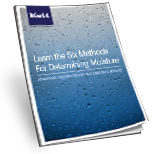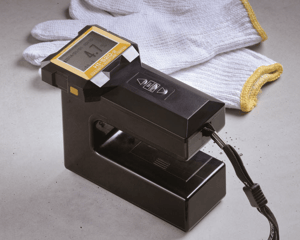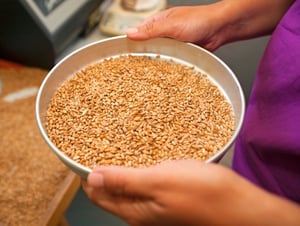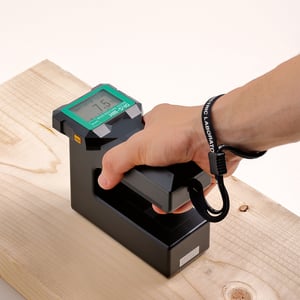 Using the wrong moisture measurement method could be costing you a lot more than you think. Identifying which method is right for you starts with understanding the benefits of each of the methods and their limitations.
Using the wrong moisture measurement method could be costing you a lot more than you think. Identifying which method is right for you starts with understanding the benefits of each of the methods and their limitations.
The purpose of this article is to provide a brief overview of each method to help you make the right choice for moisture measurement instrumentation. Choosing the right technlogy (measurement instrument) will improve profits by way of cost savings, increased productivity and efficiency and by providing consistent, reliable output quality.
Primary Moisture Measurement Methods
Chances are you’re currently using one of two primary methods (a test method that doesn’t require calibration) for all of your moisture testing.
Primary testing is right for you if:
- you are testing different products each day (eg an independent test lab, a crime scene lab, customs office or within pure product research facility).
- you need reference standards to initially calibrate a more efficient secondary method, like a NIR moisture meter.
The two primary moisture measurement methods are Karl Fischer (KF) and Loss on Drying (LOD).
Karl Fischer (KF)
This method utilizes chemical reactions to provide moisture readings.
KF is the right primary test for you if you:
- need sporadic moisture testing on a small scale.
- want to test a very small product sample with great accuracy (PPM).
- have a product that will not react chemically to KF reagents.
Loss on Drying (LOD)
In an LOD test, the sample is weighed, dried and weighed again. The difference in the two weights is then compared with either the original weight or final weight to calculate the moisture content.
LOD is the right primary test for you if:
- you need a less accurate, faster and more economical alternative to KF.
- you are conducting a low volume of moisture testing.
- your product does not have volatile compounds, eg; minerals, metals and plastics.
- you are testing non-liquid products, like soil samples, pulp and paper, chemicals or work in a contract test lab.
- you need to test heterogeneous and/or large samples.
Secondary Moisture Measurement Methods
Secondary methods initially rely on primary reference standards (obtained with KF or LOD) to calibrate the instrument.
Secondary methods are right for you if you need:
- instant results with a large volume of testing (e.g when the measurement is taking place with online or inline processes).
- testing needs to take place in the field.
- an alternative to LOD and KF tests (e.g too dangerous to interact with the products (ballistics) or too damaging to samples).
- a method that is non-destructive to your sample.
- to repetitively test the same product.
- to optimize time efficiencies.
Electrical Moisture Meter Method
There are numerous ways to use electricity to measure moisture. These include capacitance, conductance and radio frequency (RF). However, they all rely on the dielectric principle.
An electrical moisture meter may be the right choice for you if you need an inexpensive, easy to use, portable moisture meter. They are popular in the grain and seed, agricultural, wood, flooring, and concrete industries.
Microwave Moisture Meter Method (MW)
Microwave is another measurement technology that takes advantage of the dramatic differences in the dielectric constant of water versus solids. Microwave energy is emitted from the instrument and passes through the sample.
One advantage of the Microwave method (MW) is the fact that it generally is transmitted completely through the samples. For products that have multiple layers that may have very different moisture levels (think plywood), this capability is needed.
The Microwave method is right for you if you need instant measurement “through” a sample since moisture distribution throughout the sample is not consistent. Examples are wood chips, frozen food, packaged goods, and coated products.
Nuclear Moisture Meter Method (NUC)
In the Nuclear Moisture Meter (NUC) technology, energy is radiated into (or through) the sample and the amount of energy absorbed by the sample is measured.
While very specialized, some applications demand a nuclear meter. Some of these include mineral process applications that require the power, and some web-based processes that require the precision a NUC provides.
Near Infrared (NIR)
NIR uses reflectance and light absorbance calibrated against a primary reference standard as their principal technology.
NIR moisture meters are right for you if you need:
- non-contact, non-destructive testing with no sample preparation.
- accurate moisture reporting in a variety of locales, the online/inline process, lab and field (using portable, handheld moisture meters).
- testing on a variety of liquids and solids.
- surface moisture testing (or you can prepare your sealed or layered product).
Food manufacturers, processors and bulk food companies are large users of NIR moisture and composition analyzers.


